#Colonial Language Influence
Explore tagged Tumblr posts
Text
Cultural Exchange and Hybridization
The Influence of Cultural Exchange on Language Cultural exchange and hybridization are fascinating phenomena that lie at the heart of human interaction and communication throughout history. These processes have shaped societies, influenced identities, and left an indelible mark on the languages we speak today. At its core, cultural exchange involves the sharing and blending of ideas, customs,…

View On WordPress
#Colonial Language Influence#Creole Languages#Cultural Exchange#education#english-language#english-learning#Global English Varieties#Historical linguistics#inglés#language#Language and culture#Language borrowing#Language contact#Language evolution#language-learning#languages#learn-english#learning#Linguistic Hybridization#Military Conquests and Language#Pidgin Languages#Post-Colonial Linguistics#Syncretic Languages#World Englishes
1 note
·
View note
Text
Being in a english speaking country that is not the UK or USA can be weird because majority of the time I use like the UK spelling and pronunciation but every now and then I use American Spelling...
#like im just working on an essay and im like wait is it programme or program#like i know it as program but apparently that is the american spelling#like growing up i was always confused how to spell colour#like who decided what words we spell like the us and the other the uk#like we are a colony of the UK but there is also a big US influence#but i do say z as zed#and it is always mum#feels weird when i type mom because thats like the spelling in a song#like we call everything chips#but then we also have our own aussie words#australia#spelling#us english#english language#english#uk spelling#us spelling#language#canada#new zealand#ireland
4 notes
·
View notes
Text
It's been a bit since I've rambled about xenobiology headcanons, and this time because I've been thinking about Andreas I thought today's edition would be about talpaedans, seeing as how I made a list that I haven't put into a post yet-
Let's go!
Between all members of talpaedan youth and development, there is an innate basic understanding of construction, as comparable to human's ability to recognise patterns and facial language (give or take a few neurodivergencies). And specific construction comprehension is linked to whatever tool talpaedan youth are integrated in, which develops over time based on what materials are consumed (a diet of concrete may make cement mixers, or a diet that requires a lot of digging may develop jackhammers) as well of course the genes of the parent/s.
And on to that 'parent/s' thing, let's bring up haplodiplody again.
On Earth, haplodiplody is the system where one sex is developed from a fertilised egg (which tends to be the females) and thus are diploid with DNA of the mother and father, while the other sex is from an unfertilised egg (males would technically be the result of asexual reproduction) and thus is only haploid with only the mother providing DNA. Talpaedans are not an Earth species, but functionally that is the basis of their sex-determination, where females would be best translated as architects and males best translated as tradies, which in of itself is rather contextually slang in English.
And even with haplodiplody, talpaedans still have a bimodal sex distribution, though tradies are neither part of the equation. Instead, fertilised eggs though typically expected to produce architects also just as often produce workers, non-reproducing talpaedan youths that are born an raised to be the most common labourers of the colony they were born under and never leave the hive, as opposed to architects who work higher profile jobs and are in line to be promoted to site queens, and tradies who pre-war were lower rung workers who took to training younglings for work as well as in general raising them. Being bimodal it's not a perfect list of traits to be considered as either an architect or a worker, though there is a bias towards architects being able to reproduce as that would be the key factor needed in promotion. Tradies that are infertile or more characteristically architects would be considered workers and are more of a consequence of asexual reproduction and the lack of genetic diversity.
Talpaedan gender has been typically correlated with sex throughout most Poiana Lüncas colonies, with the architects being the talpaedan equivalent for women and tradies as the talpaedan equivalent for men, but workers have a more diverse gender identity even in more conservative colonies, either being a third gender or having men and women and in between identities being formally acknowledged as such in worker populations. There might be a few general issues about identity especially among architects and tradies, but colonies are less focused on the individual and most of their aggression is directed to other colonies rather than it's own population.
It is this tension towards other colonies that had eventually and near inevitably sent Poiana Lüncas into many wars, though the most recent one had been the worst and the last in many years, a war that fundamentally changed how intercolonial relationships worked. A very large colony had been expanding it's borders to accrue even more resources for it's ever growing population, in turn threatening the smaller colonies on it's outer borders, elevating tensions to an all time high. The whole shtick lasted for years until a few colonies realised that alone no one could stop this large megacolony from wiping out each of them one by one, but through an alliance they could stand together and beat the ever loving crap out of the aggressor.
And how their alliance worked was through the sharing of resources and ensuring the protection of youths especially, and so began the first war-era runs of arranged 'marriages' as tradies live up to their name in a more eh... dubious sense. By sending in tradies (who's lower rung work was mining for resources and food) from colonies not on the front line, the colonies along the border had assurances that their home had well fed and well protected populations - as well as a general diverting of power - to beat back the aggressor colony and in fact not only raze it to the ground, but dug it completely out and functionally turned it into a mass grave reeking of death; No Queen's Land it would later be named, for no surviving members of the colony were left alive to name it after themselves.
With a combination of a clearly war-created desert and the whole 'ant death smell' thing that exists in ants aka the big inspiration for my talpaedan headcanons, makes No Queen's Land an omen that trade routes never cross, instead creating what would be a ring road surrounding the outer reaches of the ex-colony that would direct trade routes through the border colonies one by one. Direct trade or travel between the colonies on complete opposite sides of the pock marked, crater desert is both impossible and otherwise detested by Queens and the architects responsible for trade routes, instead being a multicolonial multigenerational process that circles the border colonies until reaching the 'opposite side of the world'.
To this day (or at least to the day that exists universally in the moment that Andreas would consider a 'this day') the trade routes affect the lives of tradies post-war. Instead of being completely locked to the hive like workers and architects, tradies at a certain age are sent to travel in as both tradesmen and concubines to whatever colony they have been raised for, a fact that had been determined early on at the development of their tools and the needs of the recipient colony. The host colony would arrange their young to be raised by tradies that once came from their own host colony, determined by their last name of [birth colony-trade colony] (as opposed to architects and workers whose last names are simply [birth colony]) in order to be raised as bilingual to understand the majority language of their trade colony and to be an example of the future youth they would need to raise speaking their birth colony's language.
Andreas was on one such trade route when Aggregor snatched the talpaedan for materials in functionally a fusion experiment, being part of a group about to be married off to a queen, an architect or as a working tradie, technically 'divorcing' the deal when Andreas was stolen away. Considering that Poiana Lüncas isn't the most peaceful environmentally, the trade routes also serve as a double use, a sharing of resources and a preventative measure for overpopulation. I mean, a colony would be pissed if absolutely none of their trade gets to them - probably spark a conflict that may get hairy - but losing numbers is an expected consequence. Andreas doesn't expect anyone to particularly care that they're missing the one or few talpaedans that disappeared in the night, especially with the generally large number a trade route sends, and Aggregor isn't going to take out a whole line of talpaedans just to get to one; a simple 'cutting off from the group' works fine enough.
And one final thing to note, now more focused on Andreas as an individual rather than talpaedans as a species. I've mentioned death smell and thought to bring it up here since, if you've seen my stuff before or straight up follow me (for my rambling or long enough to see my rambling), I love stealing @kariachi's necromancer Argit and the whole idea of him killing, healing, and reviving Andreas in the titular episode Andreas' Fault. I looked up how ant death smell works and apparently it's a constant thing that's only combated by a constant flow of life smell, so with a brief touch of death even if Andreas doesn't REEK of death, a talpaedan would probably suspect Andreas stepped into No Queen's Land and got cursed by something. But for those of y'all buried deep enough in my rambling would be confused; 'if one can smell actual literal death and associate it as actual literal death why doesn't Andreas at least even slightly suspect the idea of being briefly dead when the castle crashed?'
Well babes, you know what's an easy simple solution for this? Andreas is anosmic :D! Of course Andreas would be the last to know, Andreas' would have no frame of reference for what a 'death smell' is. Could even be how Aggregor got Andreas separated, if everyone else can smell death smell they might notice the fact that No Queen's Land reeks of the stuff. Not a great way to find out that one is anosmic admittedly, but I mean if Ra'ad is finding out that among the many neurodivergencies he does have much of his overstimulated suffering is magic and mutation that he thought every other amperi had to deal with because you find out your husband died and now has a magical mind barrier well...
Okay okay, one more final note. Given that Andreas is a tradie, Andreas's full name would be [birth colony]-Andromeda after the name Andreas actually gets married into because Earth and especially English dominated areas of Earth like last names. And I guess if Andreas gets adopted into any Earth-based packs thanks to being attached to Argit like a puppy you can shove in another last name like [birth colony]-[pack]-Andromeda.
This has been in my notes since August woops-
#talpaedan#andreas#andreas ben 10#ben 10#xenobiology#world building#this has been a large general and specific headcanons thing that i have been rotating in my mind for forever#even longer than when it was actually documented in at least dot point form#since i am bad at names i didn't come up with any colony names#though i could probably just look at fault lines and the people who study earthquakes maybe#eh if i come up with something i might just go around in a circle going 'who needs a last name and who can make do' for the andromeda 5#which includes andreas but also might include galapagus because of that one elder i brought up once inspired by diego the species saviour#also i just came up with architect worker and tradies because i didn't like how females drones and males sounded#also i thought that the double entendre for 'tradies' was far too fitting for what i wanted to ignore#like they'd be the closet translation in english for poiana lüncas languages in a general sense#as in the work type influences the origin for the name of the sex which would then influence the name of any sex correlated genders#and in this case- sex AND work related terms like trade routes- lowkey the first thing that comes to mind to andreas when you say sex work
16 notes
·
View notes
Text
જ⁀➴ Things To Script: Politics Edition

Yes, this is an American aesthetic. Yes it is because I am American.





Elections are completely fair, not rigged, no scandals, fair.
There are no two of the "lesser evils" all candidates are genuinely good people and they want nothing but the best for the country.
All candidates represent the American people, if the American people find that the elected official is unfit they will be REMOVED (yes this is Trump shade.)
There is separation of church and state.
Americans are more open-minded about candidates from parties other than the Democratic and Republican party
(should I just say script out conservatism in general? I mean this is your reality you can if you want!)
We have no official language and ALL languages, cultures, backgrounds are represented and have the ability to be taught.
DEATH to the electoral college.
Fake news, propaganda, lies, non fact checked information cannot make it's way towards journalism.
News outlets have to report TRUE, unbiased information (I'm looking at you FOX)
No trade wars...
America does not involve itself in colonialism, imperialism, militarism, etc (mainly because those things do NOT exist.)
Supreme Court Justices do not rule for life.
There is an age limit to the presidency (this is subjective but personally I don't want an 80 year old president)
The minimum wage is increased from $7.25 (can you believe it's still that) to $20 (or whatever you prefer)
Free healthcare across ALL fifty states.
Planned Parenthood is in every state, providing safe abortions, sex ed, contraceptives, etc to everyone who is in need.
Abortions can NEVER be banned.
Free childcare across ALL fifty states.
Our politicians are civil, cordial, respectful, kind, intelligent (another dig on...let's just say a few people)
World peace
All oppressed/colonized people are FREE and live without any colonial influence.
Affordable prescription drugs.
Baby formula is affordable (this isn't really political but no formula should cost FIFTY BUCKS?)
Gay marriage is legal across all states and can NOT be revoked.
No fascism, Nazism, white supremacy, zionism, any bigoted idealogy in general does NOT exist.
Books are not banned/ can't be banned.
No fracking.
Free college.
No discrimination against ANYONE no matter their race, ethnicity, nationality, origin, sexuality, gender identity, etc.
Rape, sexual assault, pedophilia does not exist.
Crime in general doesn't exist.
Free therapy across the country.
The government actually WORKS to make this country better.
ICE does NOT exist.
Federal assistance programs can NOT be cut.
No wealth gap (no top 1% and the struggling 99%)
No homelessness.
No poverty.
Maternity leave is LONGER (isn't it like 2-6 weeks? come on now...)
Court rulings that have been passed can NOT be overturned (think roe v. wade)
No pink tax!
First time homeowners receive a grant from the government to help them with payments.
Credit scores isn't an issue, anyone regardless of their wealth can purchase a new car/home/rent an apartment.
Native Americans are seen as the true indigenous people of the Americas an they are incredibly respected, the land is returned back to them.
Follow up: Columbus Day does not exist.
The KKK doesn't exist...or MAGA or TRUMP!
No anti-vaxxers (get vaccinated, no they don't cause autism and no they aren't chipping you or whatever right wingers think)
They are laws put in place to protect our planet, nature reserves, recycling is MANDATORY, wildlife parks, etc.
History is NOT erased and is actively taught/encouraged in schools.
Guns...do I even need to explain at this point...
Immigrants are WELCOME and there is no stigma, discrimination or stereotypes about them either!
This country is extremely diplomatic we are on good terms with all countries, every meeting with them goes well and can only strengthen our allyship.
DEI EVERYWHERE!
everyone is WOKE, I mean unprecedented woke, profoundly woke EVERYONE GET MORE WOKE NOW!!!
No wars.
There is RESEARCH done on women's health (why don't we know anything about endometriosis fr...)
Mount Rushmore doesn't exist

Okay that's all I could come up with for now! Buh bye my loves!
#reality shifting#things to script#desired reality#shiftblr#shifting realities#shifting blog#shifting antis dni#shifters
2K notes
·
View notes
Text

A while ago on discord people were talking about the terms their alien species had for each other in their own languages, and i took a rough stab at it....Which then made me fall down a rabbit hole of thinking about the actual languages these would be from, since none of these guys are monolinguistic and there would have to be a reason these languages might be seen as a "default" language of a species.
(The animal names some species name each other after are "translated" loosely comparable Earth life for the sake of brevity)
Ramblings on the languages these are for under the cut.
Human: English. (many of these names are works in progress and might be changed later)
Snamel: Ossgtat. One of the languages spoken by early snamel space colonists. While spoken ossgtat eventually evolved into new languages or died off across planetary colonies, the ancient form of the language remains relevant as both a religious and scientific language (comparable to how humans use lain), as well as has had many failed pushes to be a species wide lingua franca
The most common term for jawfish is not derived from ancient Ossgtat, but rather is a loanword of the colony that first made contact with them.
Jawfish: Wossoss. The most commonly spoken language of the whistler jawfish subspecies. While the Clicker subspecies has four times the population then the Whistlers, they lack a language as widely used as wossoss.
The "deformed" suffix initially on contact was used to refer specifically to physical deformity, but as centuries pass has evolved to refer to things that are generally strange or unworldly.
Tandem: A'awa. While only the 12th most spoken language for the species, the A'awa language is significant in being the one spoken by the population of first contact, and as a result has become the language of science and technology and a frequent source of loan words in other languages. Several languages adopt A'awag words to describe alien beings or concepts.
Raptor: "Our Talk" a constructed language made centuries after first contact. The exceptional vocal mimicry of the species has resulted in alien languages being more commonly spoken amongst Raptors then their own languages, and those that do remain of theirs have radically changed from alien influence.
Our Talk was born out of an isolationist movement, constructed out of the chunks of various dialects in an attempt to make a new "purely raptor" language. Their terms for alien species are onomatopoeias, "pohum" for humans is pronounced in particularly human-like inflection.
Canary: Gsiii. While neither the most common language or the language of the Canaries first contact was attempted with The Gsiii empire ended up the first canary nation to fully embrace alien diplomacy and is the most common language of canaries off homeworld. While not universal, gsiiik terminology has spread to several other major languages, to the point that now the gsiiik word "legged" has lost its association with limbs and has evolved into the term for aliens in general.
Considering canaries are both small and blind, it is not surprising that the number of legs their giant alien visitors have is our most noteworthy feature. Interacting with a human being is usually like interacting with a massive pairs of legs.
Trunkfish: Patriarch speech. The singular vocal language used by males of the entire species and a lingua franca (something achievable when your entire species resides in a body of water the size of Lake Erie). Females and subadults communicate in a diverse array of languages made up of weak electric pulse.
"Demon" is a translation of a broad group of supernatural beings in trunkfish beliefs that are neither moral nor divine in nature that may be cruel or benevolent, and might also be translated as "spirit" or "fairy". Some aliens are given descriptive names, but others are directly named after preexisting folkloric creatures. Humans specifically are named after a sort of demonic tree believed to both cause or ward off mudslides.
Many trunkfish still see aliens as literal supernatural beings, and envision space travel and other planets as just various fairy worlds and hells that are already a part of their cosmology.
Grex: "Xenology dialect". The grex languages are constructed out of a small fixed pool of instinctive calls known at birth, however these calls can be both altered and used as syllables or phonemes in larger learnt words.
Dialects of grex languages often form around different professions and fields of research, "Anti-People" depending on one's dialect or context and pronunciation could mean anything from an alien, a misanthrope, a murderer, a fictional character, or a type of basket.
Holophant: Ocean script. The civilization of first contact has a plethora of languages signed, written, danced, and tactilely used. The terms for alien species in their signed languages tend to not be translatable, largely made up of modified or entirely new unique single signs.
The most common words for aliens in general is just the sign for animal with a black flash of their chromatophores, as opposed to the neutral dappled markings used for animals in general. In written form this is usually written as either "black" or "night" animals, in reference to coming from the night sky (space)
"Ocean script" is a logographic written language and one of the two core writing systems of the region. Here aliens are described with more readily translatable compound words.
576 notes
·
View notes
Text
Some historical context for Olrox
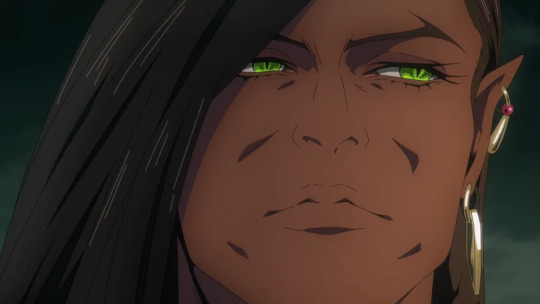
Okay, let me prephase this with one important message: Castlevania Nocturne made me really happy by making the plot all about colonialism, as colonialism and its fallout and how it influences us to this day is a topic that I am very passionate about. We do not talk enough about it. The US does not talk enough about it because it could make white people feel uncomfortable. And here in Germany we do not talk about it, because we act as if this had nothing to do with us at all.
But the show talks about it and I love it.
And I honestly also gotta say that I love that the BI_PoC character have a concrete cultural heritage. Olrox is Aztec, Annette is Yoruba, and Drolta is Egyptian. Other shows: Please take notes!
But let's talk Olrox, because he is so fucking interesting and amazing!
We know about him that he is Aztec and also that he is 250 years old. Or roughly that old by the time he kills Julia. Which would put either his birth or his turning somewhere around 1530.
Now, the fall of the Aztec Empire has a very exact date: August 13th, 1521. But you should keep in mind that this does not mean that on that day the Aztec's are extinct. To this day there is still 1,5 million people speaking Nahuatl, the language of the Aztecs, and preserving some of the Aztec cultural traditions. It was just that on that day the empire construct fell to Cortez and the Spaniad conquistadors and a lot of Aztecs went into exile to flee the genocide that Cortez was bringing upon them.
The question of course is: Was Olrox still human at this time or was he already a vampire? From his dialogue it is clear that he was at least alive and grown enough to remember the fall of the empire and the distruction Cortez and his men brought upon them. But you can bet it was very traumatic.
I also am assuming he was turned by a white man. Because so far my assumption is that vampirism is an old world thing that got brought to the new world through colonialism. (Mostly because in Dracula's court we do not see any new world vampires.)
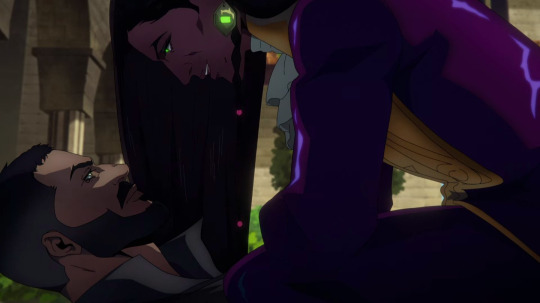
Now, the other interesting thing is what he says about his dead lover. The one Julia killed. So, first the "town in Massachusetts" he speaks about is clearly Stockbridge. Which was the town in which many Mohicans have settled during the colonial times, as well as other people from the Iroquois Nations. Now, it should be noted that the Mohicans were not part of the Iroquois alliance and in fact went to war with the Iroquois, but by the time colonialism really geared up there was some cooperation between the Mohicans and Iroquois.
Due to this they were in an alliance with the Oneida (who were part of the Iroquois) by the time of the Revolutionary war. Now, the Revolutionary War created a lot of conflict between the Iroquois nations, because they did not agree which side they should fight on. Of course both sides promised that they could keep their land, but the Mohawk, Onondaga, Cayuga, and Seneca did not trust the colonists and hence sided with the British, while the Oneida and Tuscarora (and through them also the Mohicans) sided with the Colonists.
And the dead lover clearly was among those siding with the colonists. Now, a quick refresher for the non-Americans (and the Americans who slept to history class, which is understandable). The Revolutionary War lasted from April 19, 1775 to September 3, 1783 (which, yes, also means that Julia and Richter probably were in the US during the war the entire time and the "evil" Julia was fighting probably was linked to it). And of course we all know how it ended for the Indigenous people: The colonists won, countless Indigenous folks died on both sides, only to get booted of their land soon after. The Oneida und Mohicans were made to move westwards not soon after the war ended. So, yes, Olrox would have seen that happen.
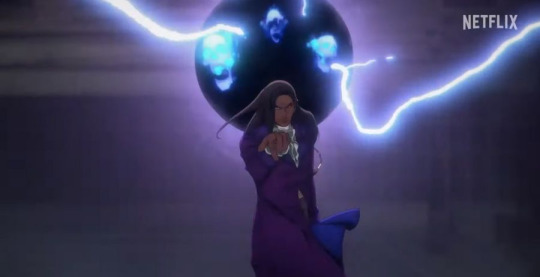
Now, an interesting thing in his dialogue was when Erzebet said: "We will create a new world." To which he replies: "I have heard that one before." And she says: "This time we are going to make it to last."
And the big question is to what this is refering. Is it refering to the colonialization or is it refering to the revolutionary war? Or something entirely different. In both cases it would be possible. And yes, the American Revolution definitely were claiming to create a new world. But was it that what he refered to or something else?
Well, never the less: Interesting character. Really good writing.
#castlevania#castlevania nocturne#castlevania netflix#castlevania nocturne spoilers#castlevania olrox#american history#history#colonialism#colonial history#aztec
5K notes
·
View notes
Text
"Hyur are so boring, why would you play a human in a fantasy game?"
Fine. Whatever. You find the idea of playing a human boring. But I'm kind of getting sick of people saying this to me, a hyur enjoyer, sometimes even directly under my own screenshots of my OCs.
Hyur in FFXIV are a *wildly* fascinating take on the "humans in a fantasy setting" that we often see in video games. They're an almost complete subversion of "humans are the dominant culture that everyone assimilates into and also they did a colonialism at some point, which is why their language is The Common One".
Meanwhile, hyur in ffxiv? They're MIGRANTS.
They're NOT the dominant culture. Are they the most numerous population in a lot of places? Sure. Because they have kids out the wazoo, but I digress. Hyur in ffxiv are defined by their adaptability and willingness to assimilate. They're *so* defined by adaptability that there are at least three major historical events throughout the astral and umbral eras called "The Great Hyur Migration". Hyur only arrived in Ishgard after the dragonsong war had started and you'd be hard pressed to find any modern Hyur born and raised in Ishgard who would define themself as anything *other* than Ishgardian. Their names may be slightly different than Ishgardian elezen, but I would theorize that might just come down to class dynamics as while hyuran noble houses exist, they're not common. However in Hingashi they've completely assimilated into eastern Raen culture, as an example. I actually hesitate to find any place we know ingame to be completely dominated by hyur, because in Gridania despite the elementals picking hyur to be padjal the culture seems to be most influenced by wildwood elezen, and in ala mhigo while hyur are the most populous of demographics, the entire culture seems to be a marriage of hellsguard and miqo'te. Ul'dah is clearly highly influenced by lalafell above all, and limsa lominsa is heavily developed by the sea wolf roegadyn. Hyur just kind of fit themselves in and adapt to what everyone around them is doing.
So why is the language spoken by all the peoples in Eorzea the same? Isn't that the hyuran language? Nope! It's pretty explicitly said that the common language is a pidgin tongue that was deliberately developed by merchants and was adopted widespread out of convenience. They even say that Tural took inspiration from this in developing their own (and it's only coincidentally similar enough that your party can understand it with minimal language barrier, funnily enough. That's a hilarious way to handwave 'eh, game mechanics' tbh).
Anyway hyurs are really cool and I really want to see more people appreciating them for the interesting lore they do have and also exploring this concept more. Like making their hyurs naturally predisposed to learning multiple languages for example.
957 notes
·
View notes
Text
I wanted to share something personal because I don't think a lot of you understand the influence of the West and its atrocities on an Arab child's upbringing. English is not my first language; I learnt it initially due to my interest in the language and Western cultures. However, seeing the true face of the West motivated me to continue learning the language to dismantle the false image of Arabs and Muslims which was portrayed by the West. I also talk about how this impacted my standing with the Palestinian cause. Bear with me as this post is long and a little messy, but I need to try and give everyone a clear and full image as much as I can.
I grew up consuming Western media due to my fascination with the English language. However I noticed the lack of Muslim and Arab representation.
When I started seeing representation later on, it was mostly Arabs and Muslims being depicted as 'terrorists' and 'barbarics'.
When a Muslim woman is depicted, she is depicted as 'oppressed' and in need of 'saving'.
I was on social media starting from a very young age. Seeing people online describe my people as 'terrorists' was not only scary, but also confusing. Why am I as an Arab Muslim child -who's living a normal childhood as everyone else- being labelled as a 'terrorist' by the West? Why are people claiming all Arab and Muslim children are trained to use guns by ISIS or/and Hamas? I remember asking my parents as a kid "Is this a real gun with the police officer?" Because I only saw weapons in movies.
I asked questions such as "Why do they think Arabs = Muslims?" The lack of acknowledgment of Christian and Jewish Arabs and non-Arab Muslims confused me.
Why were Muslim women always 'oppressed' in these movies and TV shows I saw? This is not as common as they make it seem. Why are they using the struggle of some Muslim women to demonize an entire religion? Why are they pretending to be saviours when they're actually contributing to further oppression of Muslim women? Why are they weaponizing the awful struggle of some Muslim women against the vast majority of Muslim women? (White feminism is not saving us. It's actually a form of oppression of Muslim women)
Misrepresentation bothered me and made me angry and disappointed. I couldn't finish watching a movie or an episode of a TV show if I saw any mentions of Muslims or/and Arabs, because I knew what would happen next.
When it comes to the Palestinian cause, every Arab grew up watching endless footage of Palestinians being brutally murdered LIVE. Everything and all the footage all of you are surprised to see during this genocide, were a part of our upbringing.
When I was a kid I stumbled upon a newspaper in the house with a headline about a Palestinian father who returned to his house and found all his children shot. And I remember the image very well. The father was holding a prayer mat with people holding him as he broke down on his knees. His dead children were on the floor next to each other. Seeing this image of children my age murdered by the Israeli occupation shocked me. I remember my parents having to hide the newspaper from me because of the impact this image had on me.
I had to start reading into politics at a young age, and I realized that everything that Western media was trying to portray about the West being 'civilized' was a lie. How can you be civilized if you're a murderer or/and contribute to the murder of the innocent?
When I learnt about the history of imperialism, colonialism, slavery,...etc. growing up, I recognized the pattern that colonialists use and I saw that the colonizers of yesterday, are the same as today, except Western media is doing a great job covering for them nowadays, and a lot of people only started noticing that recently.
The West seemed fascinating to me as a child, but after seeing the horrendous false images that're being portrayed of my people in the West, all of my fascination turned into anger and motivation to fight against it.
The real terrorists in the world are not the brown and bearded men, veiled women, or the innocent children. The real terrorists are the ones who set the stage for the murder of innocent people, the exploitation of their resources, using propaganda and painting an image of the innocent that cannot be more false and racist, and the fascists that put on a 'civilized' mask.
I will forever stand with my Palestinian brothers and sisters. I will forever defend my Arab and Muslim brothers and sisters, and I won't give room to any misrepresentation. Enough is enough.
Edit: I wanted to add that growing up, I was scared of telling people about where I'm from, my religion, and what language I speak due to the microaggression and discrimination I was subjected to. Not to mention the amount of times I saw on the news Arabs or/and Muslims getting killed in Western countries (aka hate crimes).
#free palestine#palestine#gaza#from the river to the sea palestine will be free#signal boost#social justice#palestine resources#colonialism#imperialism#jerusalem#the west bank#Arabs#Arabian#Muslim#Islam#tel aviv#yemen#hamas#us politics#apartheid
2K notes
·
View notes
Text
New to witchcraft? Awesome! Here's some things you should pursue.
An understanding of sympathetic magic: Correspondences, their metaphysical and theoretical framework, and their derivation.
Magical systems that incorporate the entire gender spectrum.
Energy work that isn't based on visualization.
The means of manifestation: How, where, and when spells affect physical change. The physical mechanisms through which witchcraft manifests beyond just willpower/intent/wishes/etc.
The history and subsequent influences of, and on, popular contemporary practices like Hermeticism, "Ceremonial Magick"/Golden Dawn, Wicca, and New Age/New Thought/LOA/Reiki.
How to approach and practice magic with critical thinking skills.
Influence of consumerism on contemporary practices.
Divination as systems: all methods of divination beyond tarot, their statistical applications, and their different methods of use.
The anthropology of medieval Arabia, Europe, Near East, and Asia relative to the magical or occult publications of the era. What is purely religious, parareligious, or syncretist and what does that mean for the interpretation of the text?
The genuine limits of our knowledge of the ancient world, what's possible for us to know and what can't we know?
Conversations with practitioners of closed or semi-closed practices and perspectives of POC when it comes to what the western world would label as "witchcraft".
The differences and similarities between superstition and the practice of witchcraft.
An understanding of the influence of colonialism on modern witchcraft and the language used to discuss magic.
Critical Race Theory (CRT), Queer Theory, and systems of oppression.
Botany and herbology: An understanding of the physical and medical properties of plants.
Building a personal lexicon for modern and/or colloquial terms used in and by the witchcraft community to describe and discuss practices.
Spell design: What makes a spell a spell? What is the smallest or slightest action that can be considered a spell and why? What are the most important and influential elements of the design and application of a spell?
Altars: Their use, design, and potential; whether or not an altar would benefit your practice or goals for practice.
A critical approach to spirit work and astral projection, being able to discern between personal narratives and probable experiences.
A safe and solid community to become a part of. One that does not allow the influence of personal narratives (Without addressing them as such), doesn't allow for the mixing of adults and minors, and with established and enforced logical and reasonable rules.
Collect and cross-reference correspondences from as many sources as possible, then start to create your own.
Try to find a STEM subject that interests you and study it through any non-dogmatic avenues available to you.
The items highlighted in blue are things I highly recommend!
Here is a list of things to avoid.
This is, of course, not an end-all-be-all list of possible responsible and healthy pursuits.
You can learn more about me, find my master-post, check out my Patreon, and suggest content here.
#witchcraft#beginner witch#baby witch#baby witch tips#witchcraft for beginners#begginer witch#witchcraft community
818 notes
·
View notes
Text
War and Language Contact: The Impact on the English Language
Echoes of Conquest As history unfolds, the clash of civilizations and the march of empires have often been accompanied by the exchange of more than just territory and power. In the tumult of military conquests and conflicts, languages have collided, merged, and transformed, leaving an indelible mark on the linguistic landscape. The English language, in particular, bears the imprint of its…

View On WordPress
#Colonialism#Cultural Exchange#education#English language history#english-language#english-learning#Global language#Historical linguistics#inglés#language#Language acquisition#Language borrowing#Language contact#Language development#Language diversity#Language hybridization#Language Influence#language-learning#languages#learn-english#learning#Linguistic evolution#Military conquests#Norman Conquest
1 note
·
View note
Text
You'll often hear broadly about the role of Christian Missionaries in Colonial enterprise, but it's rare to see people talk about the specific mechanism by which they operate. While reading about the various ways British rule over Nigeria was consolidated in the early 20th century, I found the section on missionary activity to be very interesting. Especially because missionaries often play similar roles in the Neo-Colonialism of today; providing intelligence to Imperialist institutions, manufacturing consent for Imperialist subjugation among colonised peoples and causing political divisions that weaken anti-Imperialist struggles are all just as important today as they were back then. Much like the broader structure of Colonialism itself, they've just taken different appearances to keep with the times while the core relations of domination and exploitation remain intact
Firstly, the missionaries often came into closer touch with the Nigerian peoples amongst whom they worked, got to know more than the administrator did about the peoples, their customs, traditions and so on and this intimate knowledge the missionaries placed at the disposal of the administration either through direct advice or in the form of published works. Some of the earliest historical, anthropological and linguistic studies of Nigerian peoples were carried out by the missionaries. Various missionaries were examiners in Nigerian languages for the administration which believed that knowledge of Nigerian languages would ease administrative work, make it possible to adjust policies to local susceptibilities and thus make British rule less objectionable to the people. Secondly through their ideological propaganda and schools the missions turned out to be the most effective means of winning " souls " to the western way of life. They were, in short, the cultural imperialists par excellence. Since the missionaries were closely associated in the thinking of Nigerian peoples with the administration, the benefits of literacy and the like which they brought redounded to the advantage of the colonial regime. On the role of the missions as a strong force in establishing colonial rule Sir H. H. Johnston has said : " The missionary is really gaining your experience for you (the colonial administrator) without any cost to yourself… They strengthen our hold over the country, they spread the use of the English language, they induct the natives into the best kind of civilisation, and, in fact, each mission station is an essay in colonisation ". Thirdly missionary work began by converting only a fraction of the community, and however small this fraction, this event meant splitting the community into two ideological camps, a development that weakened indigenous resistance to alien influences which preceded colonial rule in Nigeria and which with the inception of colonial rule strengthened statistically " the occupying force of whites ". At least this must have been the psychological effect on the minds of Nigerians even if militarily the wide dispersal of the missionaries constituted a weakness and an embarrassment to the Administration in cases of general uprising against British rule
Adiele Afigbo (1971), The consolidation of British imperial administration in Nigeria: 1900 - 1918, Civilisations Vol. 21 No.4
554 notes
·
View notes
Text
so we (and by we, i mean the very specific overlap of jews and nerds among whom i make my home) talk a lot about how tolkien's dwarves, in both the books and movies, were likely influenced by certain jewish stereotypes. obsessed with gold/wealth, secretive (especially about their language and religion), refugees from their ancestral home, portrayed with big, sometimes hooked, noses and interesting facial hair, and most specifically: the favourite little meow meows of one particular god, causing them to be shunned and persecuted by other races and creeds. this is likely unintentional, coming from the subconscious of tolkien in the same way orcs were "based on mongols" (ew colonialism) and activating subconscious biases/stereotypes in the people who designed the dwarves for the movies. it's subtext, albeit subtext that influenced the next eighty years of fantasy.
but what i don't see much discussion of is the fact that in terry pratchett's discworld, it's intentional. terry pratchett's dwarves are, more or less, jews.
carrot is a human adopted by dwarves, based on human standards. but within dwarf culture, he IS a dwarf. specifically, he has undergone specific rituals and memorised certain passages, making him LEGALLY a dwarf. this is basically how conversion works in judaism. indeed, as in judaism, it's considered rude to even mention that carrot is six feet tall and obviously wasn't born into the culture he has adopted.
the dwarves also have internal rifts - there are a group of 'orthodox' dwarves who consider the dwarves in ankh-morpork (who have adopted other customs and don't follow traditional roles) not to be dwarves at all, and don't recognise carrot as a dwarf for the same reason. they believe that the way to be a dwarf is to live in an all-dwarf community and follow their traditional rules, while other dwarves believe they need to change with the times and integrate (at least somewhat) with larger society. jewish as fuck.
there's also the interaction of dwarves with gender. when cherie comes out as female (which isn't a recognised gender by dwarvish society) she is ostracised for taking on the feminine roles common to other discworld races. however, she could never THINK of cutting off her beard, because she is still a dwarf. i see parallels with women in judaism taking on roles traditionally considered 'masculine' (e.g., as rabbis, wearing tallit and kippot) and the acceptance of queer people into jewish communities. there's lots of great discussion about cherie as a trans character on tumblr, btw.
finally, something that particularly strikes me is the line from carrot in tfe, where he says that the biggest dwarf city on the disc is ankh-morpork. obviously all diaspora communities can relate, but it's really something to know that new york is the city with the most jews in the world (960k to jerusalem's 570k. btw, 3rd is LA!).
i just love that, again, consciously or unconsciously, pratchett incorporated more positive elements of jewish culture into his portrayal of the dwarves.
#gnu terry pratchett#discworld#jumblr#jewish#judaism#tolkien#dwarves#the hobbit#lord of the rings#the silmarillion#carrot ironfoundersson#cherie littlebottom#cheery littlebottom#the origin of dwarves in tolkien is jewish as fuck#also i love orthodox jews! y'all are so cool!! i hope this post doesn't come off as critical of orthodoxy#not bringing up the conflict between trolls and dwarves in the main post bc... yk... but like. it's there. it's VERY there.#also i do not want shit from people for mentioning jerusalem. it's a fun fact. read my fucking bio and then shout at me.#feels like i'm poking a hornet's nest by jewposting but we shall see#long post
684 notes
·
View notes
Text
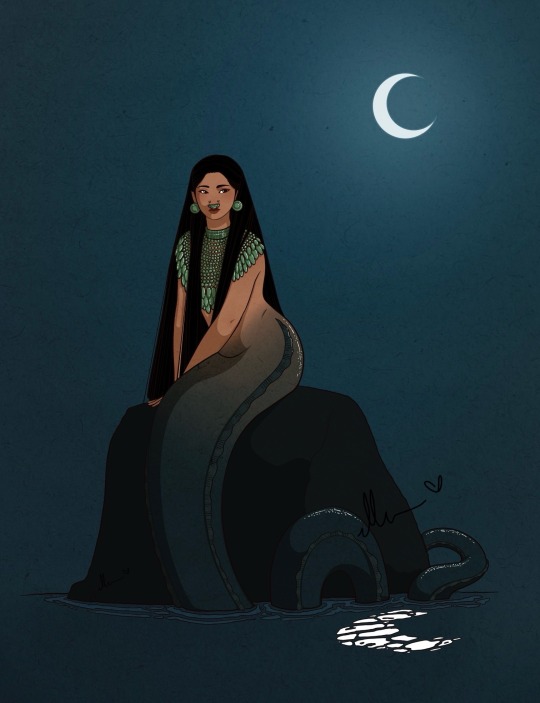
Historical mermay Prompt 8: Meiji Era -> Aztec Mermaid (Tlanchana)
So the last prompt for Historical Mermay was supposed to be Meiji era but.... last year there was a historical Japanese mermaid and a late Victorian mermaid so.... I decided to switch this one out with a different historical mermaid that had been on my list.
Aztec mythology has a mermaid-like figure, which is very exciting for me, but there's a full backstory so strap in for some lore. The origin for Tlanchana isn't Aztec at all, but instead originates from an Otomi goddess called Acpaxapo. Acpaxapo is a benevolent lake goddess who is half woman, half water-serpent. When she was adopted by the Aztecs her aspect evolved to Tlanchana, a much more mysterious and dangerous deity who would drown men with her tail.
I had hoped to make some more references to the original Otomi influence in my illustration but I was having a devil of a time looking for specifically Otomi artifacts (Otomi is technically a collection of languages and is an exonym for the peoples who speak Otomi languages ((if I've even understood what I 'm reading correctly))...and English websites barely cover the big 3) so I eventually pivoted, since I haven't done any siren-like mermaids for this challenge yet and was interested in doing something a little moodier. A description of Tlanchana described her as wearing only jewels and that sparked a lot of creative joy. And looking at all the jade ornaments in pre-colonial jewelry.... I dove right in. I kept a very serpent-like design for her tail, and made all her ornaments in jade... a series of necklaces, her nose jewelry (which I took some creative liberty with after looking at goddess depictions), and ear plugs. I wouldn't say she is accurate, there's a lot of artistic license salt in this stew... but I think she turned out pretty cool.
(And if you just had the thought that this is the most i have written in a description for ages... it's because this one had... new? research. Example: I've drawn redesigns with Ottoman fashion 3+ times, I don't have much new to say for the Ottoman mermaid. I've talked and researched a lot less on Aztec mythology so I had things to say.)
I am the artist! Do not post without permission & credit! Thank you! Come visit me over on: instagram, tiktok or check out my coloring book available now \ („• ֊ •„) /
https://linktr.ee/ellen.artistic
#historical mermay#historical mermaid#ellen artistic#aztec mermaid#otomi mermaid#ellenart#digital illustration#historically inspired#it's gonna be mermay
481 notes
·
View notes
Text
The words we choose and their meanings are deeply influenced by our colonial history. Our past, along with the events and decisions we've made, is closely linked to our language. In some countries, certain words are now considered inappropriate, and many advocate for changes, recognizing that language evolves with society.
However, awareness of these issues is often not as advanced as it should be. For instance, the word 'black' (or 'Zwart' in Dutch) frequently carries negative connotations, associating it with notions of badness, illegality, or evil. To become more aware of the conditioned behaviors within ourselves and our surroundings, we must also examine our spoken language. Language is one of our primary forms of communication and can be a vehicle for bias, prejudice, and often unnecessary harm to those around us.
We encourage you to reflect on why you choose certain words. Who influenced your language choices? How often do you notice that others might feel offended or hurt by the words you use? What alternative words could convey your meaning more effectively? ° ° ° ° ° ° °
amenti #amentimovemeant #movemeantmethod
81 notes
·
View notes
Text

Uilta Indigenous girl from Sakhalin Island of Siberia in traditional clothing.
Photo and text by: Alexander Khimushin, from "The World in Faces" photo project. Diversity of traditional cultures of the world through the portraits of Indigenous People.
"Uilta Indigenous People (also known as Orok) are one of the smallest ethnic groups of Siberia living the the Far East. There are only about 200 Uilta People living on this planet. The Uilta language that belongs to Tungusic language family is spoken today by just a very few elderly people.
Uilta Indigenous Peoples home is Sakhalin - the largest Island of Russia stretching for about 1000 km directly to the North of Hokkaido Island of Japan. Recent research indicates that Uilta People are related to Ulchi People and migrated to Sakhalin from Khabarovski Krai, the mainland Russia, around 17th century. At that point in time the Island was a sphere of influence of the Chinese Empire. A hundred years later Sakhalin become administered by both, the Russian Empire and Japan. A penal colony was established on Sakhalin bringing large numbers of Russian political exiles. One of them, Lev Sternberg, became an important early ethnographer on Uilta, Nivkh and Ainu People. After Japan-Russia war, in the 1920s, The Northern part of Sakhalin became part of Russia and the Southern Part became Karafuto Prefecture of Japan. This situation lasted until 1945, when Japan capitulated after the WWII. That's why Uilta People who lived in Poronaysk (also known by Japanese name of Sikuka) and born before 1945 have Japanese names.
My good friend and the spiritual leader of Uita People, Minato Siryuko, is one of them. Living on the shores of the Gulf of Patience every summer, Minato, an honorable elder of Uilta community, performs Feeding of the Spirit of The Sea ceremony, when all Uilta and Nivkh People gather together for an annual celebration that held at summer solstice. In the Sakhalin there were 3 Indigenous Ethnic groups - Ainu, Nivkh and Uilta. When Japan capitulated in 1945 Ainu People were taken by Japanese back to Hokkaido (the Ainu People historical homeland), the Nivkhs and Uilta were considered as natives of Sakhalin and left on the Island. Because of that some Nivkh and Uilta who served in the Imperial Japanese Army were held in Soviet work camps. There is a an abandoned memorial that Minato took me to, with the name of those Uilta who died at that turbulent time. In 2017 I was contacted by LeCiel Foundation team who were making a documentary about 12 highly spiritual elders of Indigenous People from all over the world. They wanted to include to the film Uilta People of Sakhalin as well. A Google search brought them my photos of Uilta. Guys from LeCiel called me from London and told me about their project, I thought it was really interesting and without much hesitation I agreed to take them to Sakhalin Island and to introduce them to Minato, acting as a local fixer and translator at the same time)) Then, during the filming, The LeCiel founders unexpectedly invited Minato to the United Nations. The invitation was also sent to all twelve Indigenous leaders who were filmed. She really wanted to travel there, but was afraid going alone, so I was offered to accompany her (I had to come back from Mongolia where I was filming my own project) This is how the Uilta Indigenous People spiritual leader from Siberia and a nomadic photographer, living in Australia at that time, ended up at the United Nations in New York City together!
What happened next? Well… many interesting things, I can assure you, but I will tell you about it next time! )) You can watch that amazing documentary film, THE TWELVE, with several language subtitles. I put the link in the comments. You can also see my photo with my dear Minato, taken during the time of filming in Sakhalin! I put it in the comments as well."
#uilta#siberia#oroks#ethnography#russia#Ульта#documentary photography#siberians#photojournalism#ulta#Ороки#northern asia#ulcha#Sakhalin#northeast asia#russian far east#russian#russians#siberian#siberian people#indigenous#indigenous women#native#native women#native siberians#indigenous siberians#native people#asia#asian#alexander khimushin
80 notes
·
View notes
Text
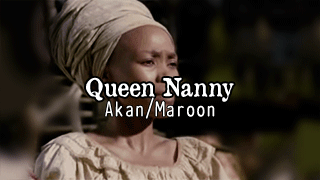
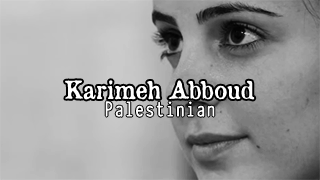
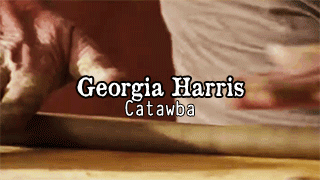
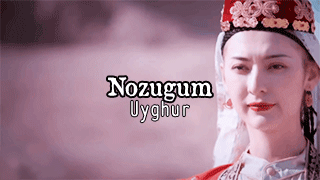
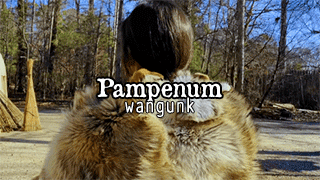
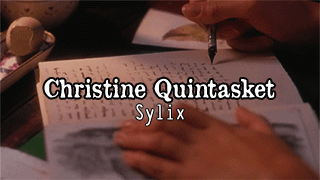
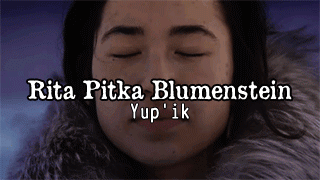
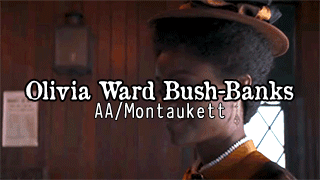
Historical Indigenous Women & Figures [6]:
Queen Nanny: the leader of the 18th century Maroon community in Jamaica, she led multiple battles in guerrilla war against the British, which included freeing slaves, and raiding plantations, and then later founding the community Nanny Town. There are multiple accounts of Queen Nanny's origins, one claiming that she was of the Akan people from Ghana and escaped slavery before starting rebellions, and others that she was a free person and moved to the Blue Mountains with a community of Taino. Regardless, Queen Nanny solidified her influence among the Indigenous People of Jamaica, and is featured on a Jamaican bank note. Karimeh Abboud: Born in Bethlehem, Palestine, Karimeh Abboud became interested in photography in 1913 after recieving a camera for her 17th birthday from her Father. Her prestige in professional photography rapidly grew and became high demand, being described as one of the "first female photographers of the Arab World", and in 1924 she described herself as "the only National Photographer". Georgia Harris: Born to a family of traditional Catawba potters, Harris took up pottery herself, and is credited with preserving traditional Catawba pottery methods due to refusing to use more tourist friendly forms in her work, despite the traditional method being much more labour intensive. Harris spent the rest of her life preserving and passing on the traditional ways of pottery, and was a recipient of a 1997 National Heritage Fellowship awarded by the National Endowment for the Arts, which is the highest honor in the folk and traditional arts in the United States. Nozugum: known as a folk hero of the Uyghur people, Nozugum was a historical figure in 19th century Kashgar, who joined an uprising and killed her captor before running away. While she was eventually killed after escaping, her story remains a treasured one amongst the Uyghur. Pampenum: a Sachem of the Wangunk people in what is now called Pennsylvania, Pampenum gained ownership of her mother's land, who had previously intended to sell it to settlers. Not sharing the same plans as her mother, Pampenum attempted to keep these lands in Native control by using the colonial court system to her advantage, including forbidding her descendants from selling the land, and naming the wife of the Mohegan sachem Mahomet I as her heir. Despite that these lands were later sold, Pampenum's efforts did not go unnoticed. Christine Quintasket: also known as "Humishima", "Mourning Dove", Quintasket was a Sylix author who is credited as being one of the first female Native American authors to write a novel featuring a female protagonist. She used her Sylix name, Humishima, as a pen name, and was inspired to become an author after reading a racist portrayal of Native Americans, & wished to refute this derogatory portrayal. Later in life, she also became active in politics, and helped her tribe to gain money that was owed them. Rita Pitka Blumenstein: an Alaskan Yup'ik woman who's healing career started at four years old, as she was trained in traditional healing by her grandmother, and then later she became the first certified traditional doctor in Alaska and worked for the Alaska Native Tribal Health Consortium. She later passed on her knowledge to her own daughters. February 17th is known as Rita Pitka Blumenstein day in Alaska, and in 2009 she was one of 50 women inducted into the inaugural class of the Alaska Women's Hall of Fame Olivia Ward Bush-Banks: a mixed race woman of African American and Montaukett heritage, Banks was a well known author who was a regular contributor to the the first magazine that covered Black American culture, and wrote a column for a New York publication. She wrote of both Native American, and Black American topics and issues, and helped sculptor Richmond Barthé and writer Langston Hughes get their starts during the Harlem Renaissance. She is also credited with preserving Montaukett language and folklore due to her writing in her early career.
part [1], [2], [3], [4], [5] Transphobes & any other bigots need not reblog and are not welcome on my posts.
578 notes
·
View notes